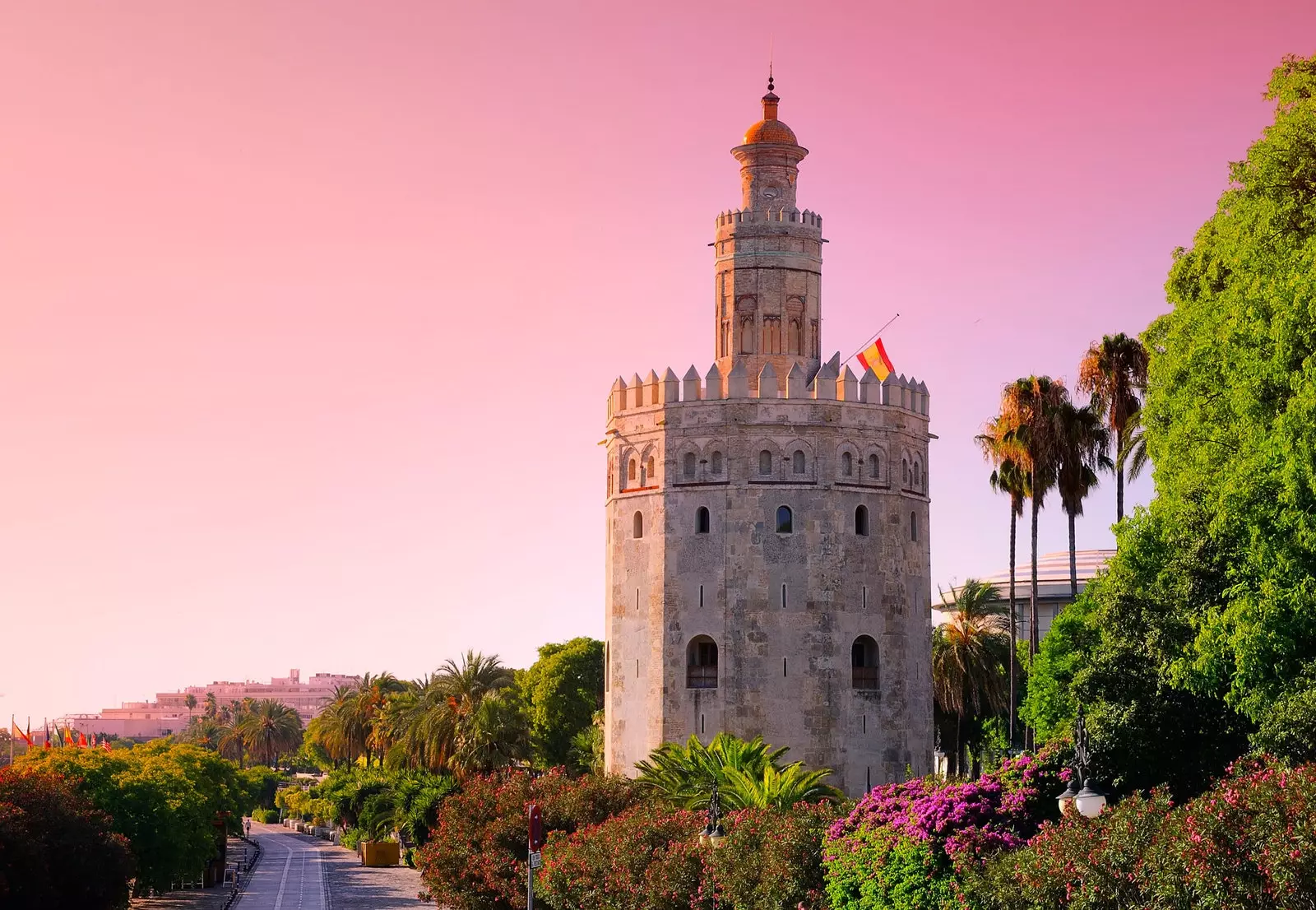
The Tower of Gold has a special color
It is, without a doubt, one of the most recognized symbols of Seville: together with the Giralda and the cathedral, Who doesn't think of its Torre del Oro when talking about Seville?
Witness of great historical milestones, this monument bears guarding the banks of the Guadalquivir for no less than 800 years.
Eight centuries in which it has had the most varied uses: from a chapel to a prison for nobles, passing through a gunpowder warehouse and offices of the Harbor Master and Naval Command.
Today it houses a naval museum and visits also allow access to its viewpoint, from where the panoramic view of the river and the city skyline make it well worth climbing its —oh!— 200 steps.
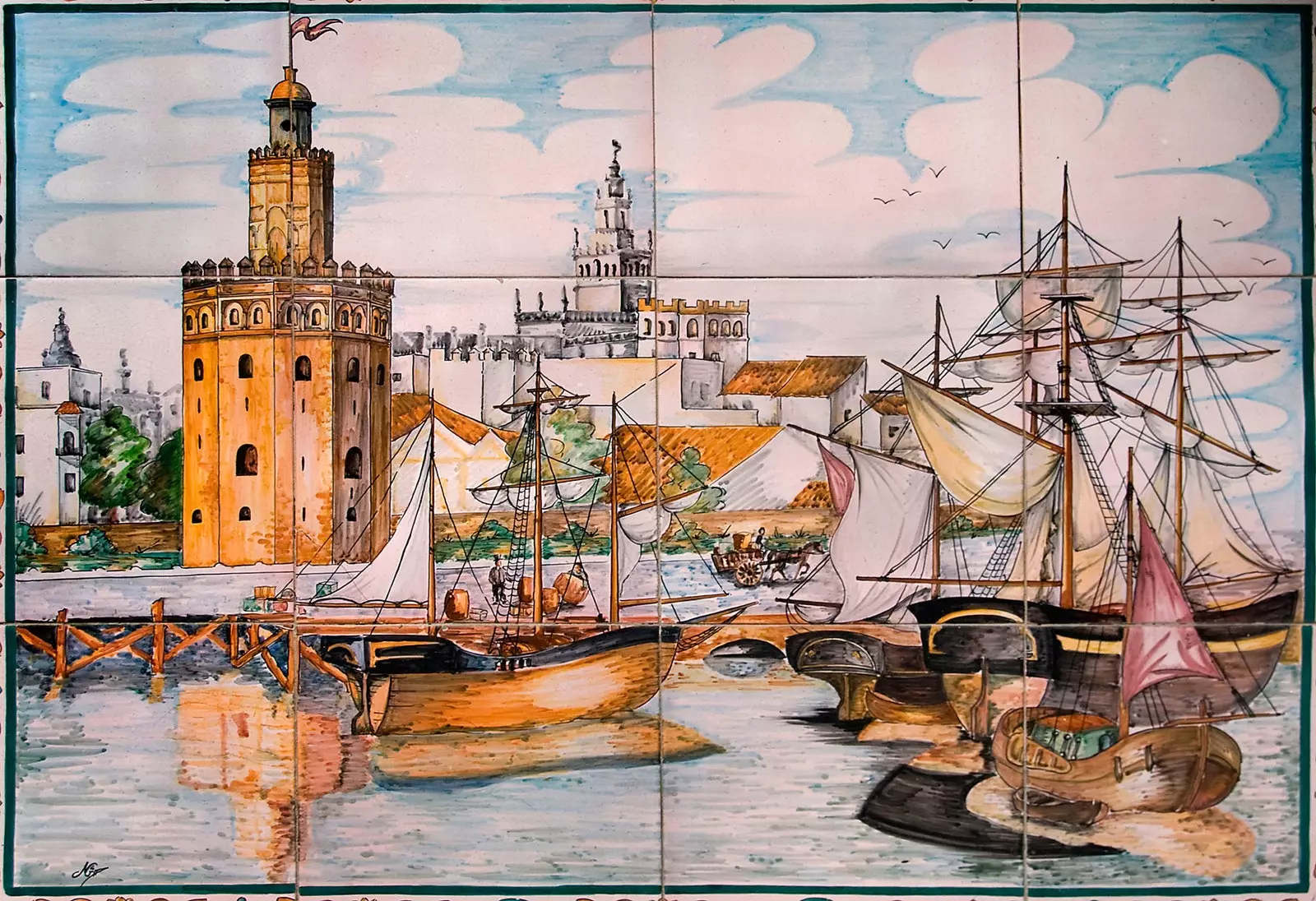
Who doesn't think of its Torre del Oro when talking about Seville?
But, what is the origin of this Seville emblem? Its construction, which they say was carried out in just one year —it started in 1920 and ended in February 1921, although beware, there are those who doubt the veracity of this version—, was carried out by the Almohads, who for fear of an invasion from the Guadalquivir decided to build a wall to protect the heart of the city.
Near the cathedral was also the twin sister of the Torre del Oro, the Torre de la Plata, today somewhat more deteriorated and semi-hidden between residential buildings. Both were united by that impenetrable wall of which only the two monuments remain standing.
But yes: the two witnessed the arrival of gold from America through the waters of the Guadalquivir, although, despite gossip, it was never kept in the Torre del Oro.
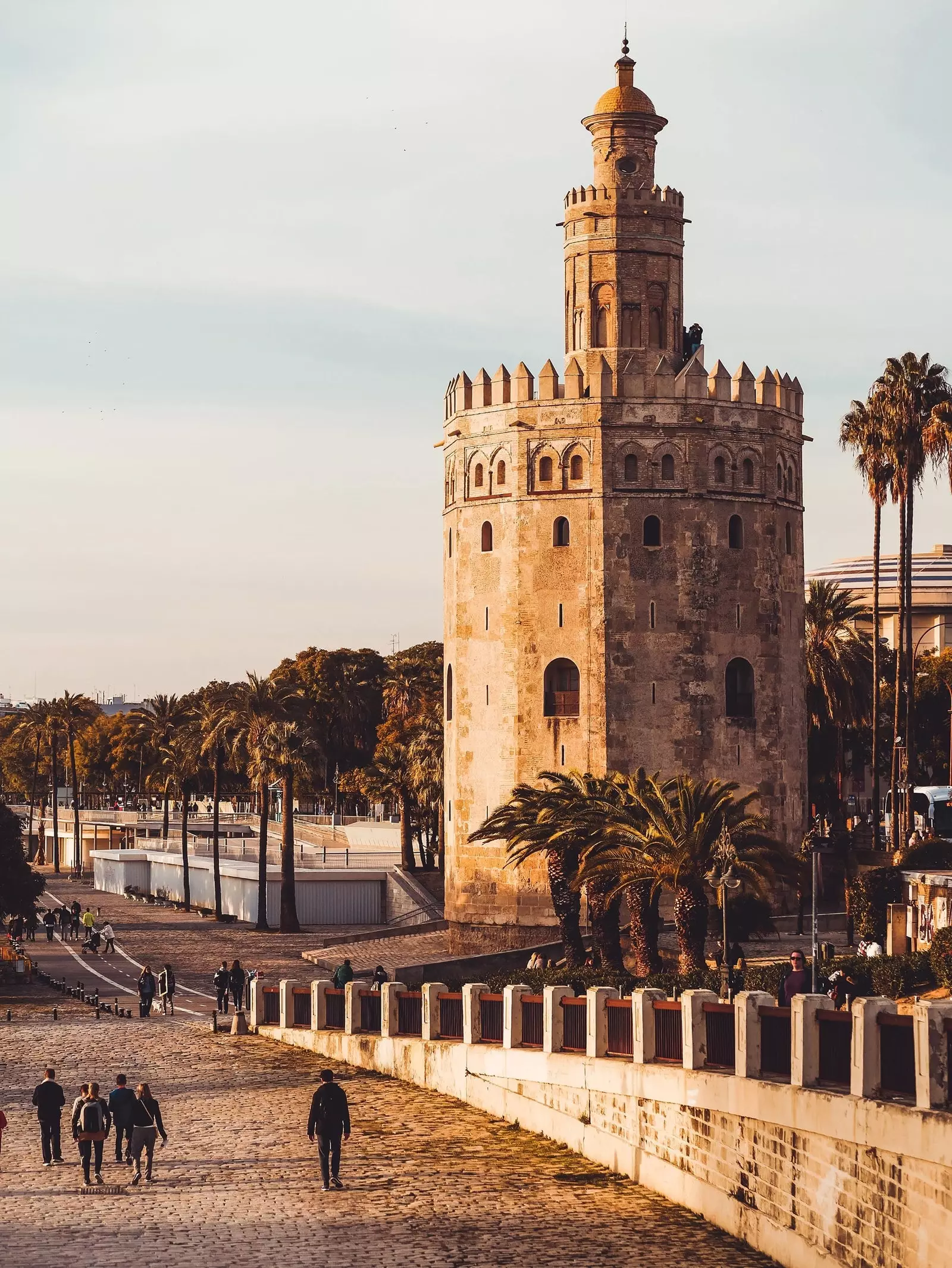
The Tower of Gold celebrates eight centuries
That it is called like that, “del Oro”, has to do with the mixture of pressed straw and special mortar with which its façade was covered and that made the sun's rays hit it more strongly at certain times. Hey, puzzle solved.
So after celebrating the anniversary hanging around the models of the old Nao Victoria or the San Felipe, contemplating old maps and nautical artifacts exhibited in its museum —even the figurehead of Alfonso XIII's old yacht, the “Giralda”, is here—, It will be time to explore what else is going on around the Guadalquivir.
Because the river that separates Seville in two, the one that for centuries has concentrated the soul of a city that lives by and for it, it unfolds on both shores giving away a thousand ways to enjoy it.
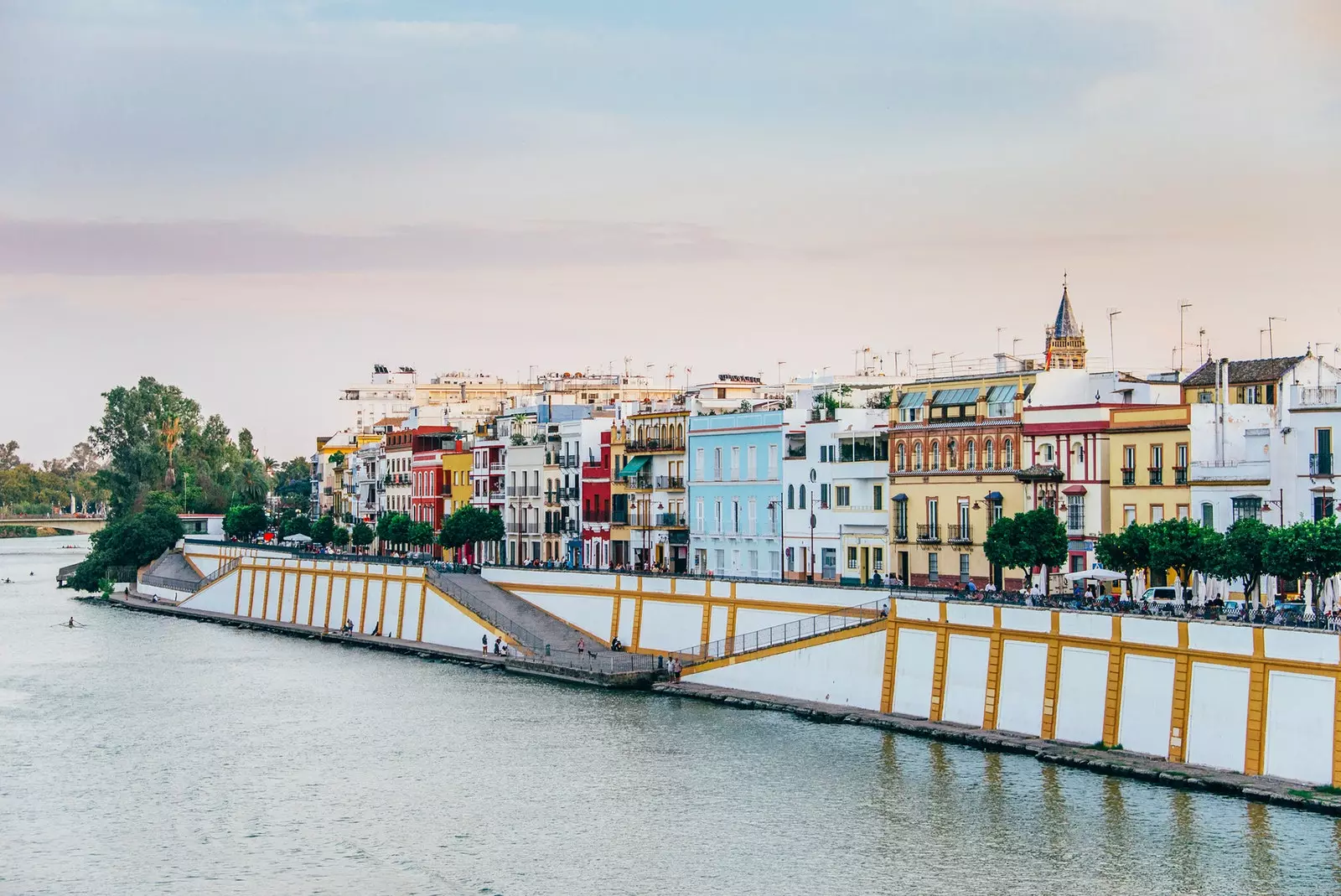
Triana, old but modern
FROM SEVILLE… TO THE WORLD!
We walked just 200 meters from the Torre de Oro in the direction of the Triana Bridge when we came across the Nao Victoria 500, an incredible replica of the only one of those five ships that left Seville to go around the world 500 years ago that managed to return to port. From here it is commemorated, in full Paseo Marques del Contadero , the greatest maritime adventure in history.
Getting on board to find out how that trip unfolded is the culmination of the visit that begins in the Espacio I Vuelta al Mundo, located next to the river. Inside, it is the voice of the ship itself that narrates the details of the preparations, the harshness of that voyage, the dangers her crew faced, and even the significance of the historic achievement.
With the lesson of history learned, we are encouraged with a walk to enjoy life and the atmosphere that is always breathed next to the Guadalquivir. That this is Seville, and here the street is lived. Just in front, Calle Betis dazzles with its colorful facades: Triana could not have a better welcome than this.
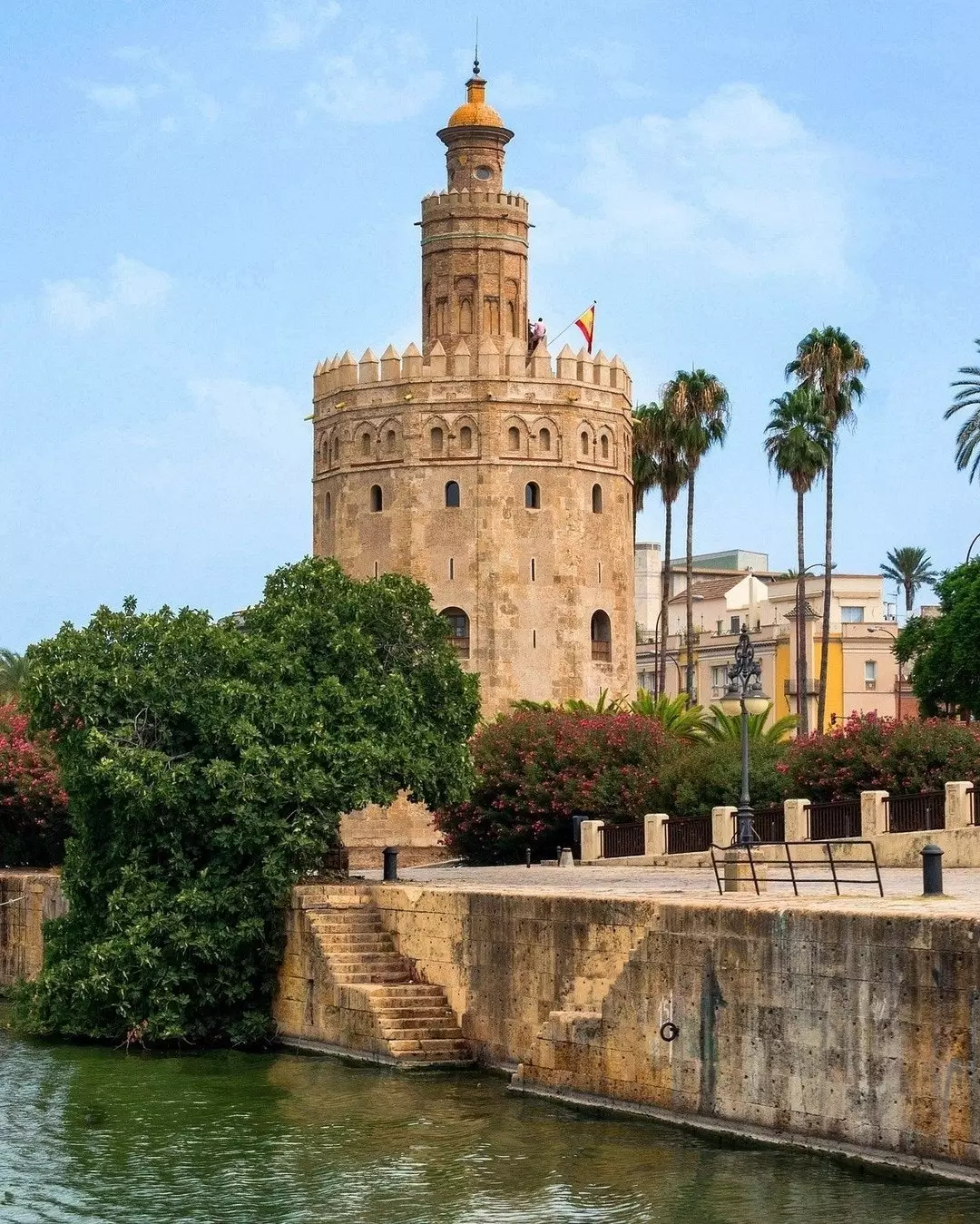
Today the Torre del Oro houses a naval museum and visits also allow access to its viewpoint,
But we won't cross to the other shore yet, better to sit with our legs towards the river and enjoy the sun's rays that, in these parts, are often seen. On good days the waters of the Guadalquivir become a show of canoes, kayaks and SUP boards, that run through them from top to bottom without ceasing.
What are you wanting to prove how the matter is given? Companies like Paddle Surf Seville or Kayak Seville They rent all the necessary material to have a good time, either on their own or on a guided tour.
Next to the Triana Bridge, built in 1845 where the Arabs had previously installed the so-called "boat bridge", Composed of wooden panels supported on 13 tied boats that connected both banks of the river, we find the monument to Tolerance, the work that Chillida did at the request of the Fundación Amigos de Sefarad and that has been installed in the Muelle de la Sal since 1992. The stamp of the sculpture with the bridge in the background is already a classic of the city.
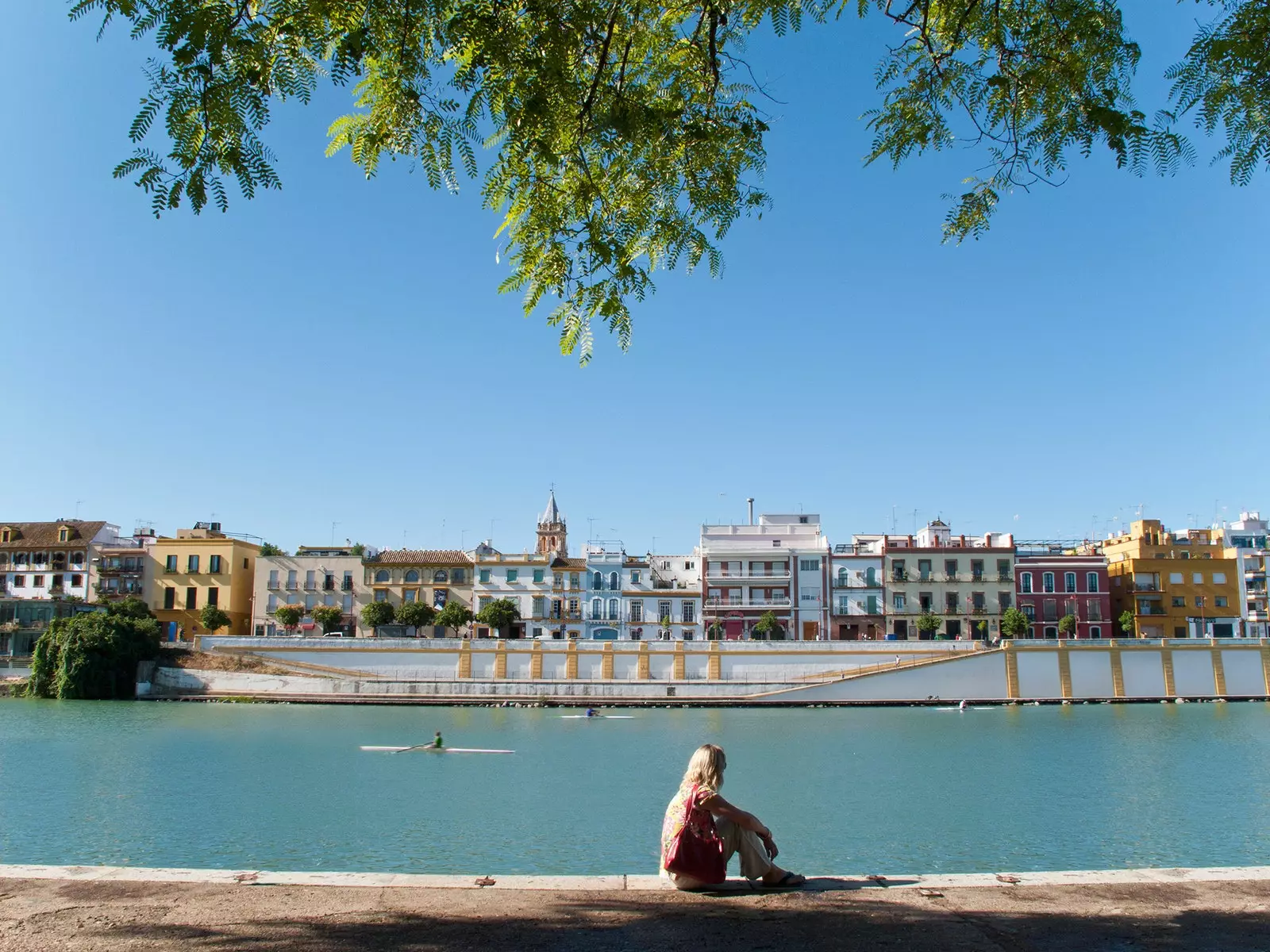
Looking at Triana
EAT AND SLEEP BY THE RIVER: WELCOME BE THE ENJOYERS
Yes, now it's time to focus on the part that makes life happier: Let's eat, let's sleep.
Just at the height of the bridge, on Paseo de Colón, the Hotel Kivir opened its doors two years ago offering itself as the only accommodation proposal in this lively street full of bars where having a drink with friends is the order of the day.
With stylish rooms and a clear commitment to functionality, the best thing about this hotel designed by Cruz and Ortiz is, obviously, the views: either from your rooms or from the Skyline Kivir, your terrace, his eyes will not turn away from them.
When we focus on the food, things get complicated —to know what to choose, of course—. If you feel like tapas, the Lonja del Barranco gourmet market is a stone's throw away: 20 stalls where you can snack, whether with a plate of paella, with some croquettes or an omelette, makes it easy for us.
But if what is intended is to enjoy a proper gastronomic tribute, there is no doubt: it is time to cross the Triana Bridge, reach the Altozano, walk along the pleasant Paseo de la O and sit down, either on the terrace or inside , in De la O, Manuel Llerena's gastronomic bet that, despite his few years of life, is giving a lot to talk about.
And he does it because behind his attractive menu, which he constantly changes, always drawing on local producers and flavors of the land, there is a nice story to tell.
Manuel, an architect by profession, decided to take the leap to try new challenges —Or old vocations, depending on how you look at it—and enter the world of cooking in 2018 to create his own project.
A restaurant that he designed himself and to which he awarded an interior that is a continuation of the banks of the Guadalquivir itself: the green and the water, embodied in a vertical garden, conquer us.
On the plate, proposals as extremely attractive as the free-range chicken pâté with pumpkin jam, the cheek millefeuille with red curry and wonton pasta or the delicious red tuna ribs.
All served —attention, surprise— in a crockery that, recovering the pottery tradition of the Triana neighborhood, is made by Manuel's wife in the oven that they have installed in the bowels of the restaurant. Nice projects to give, of course, a lot, a lot of love.
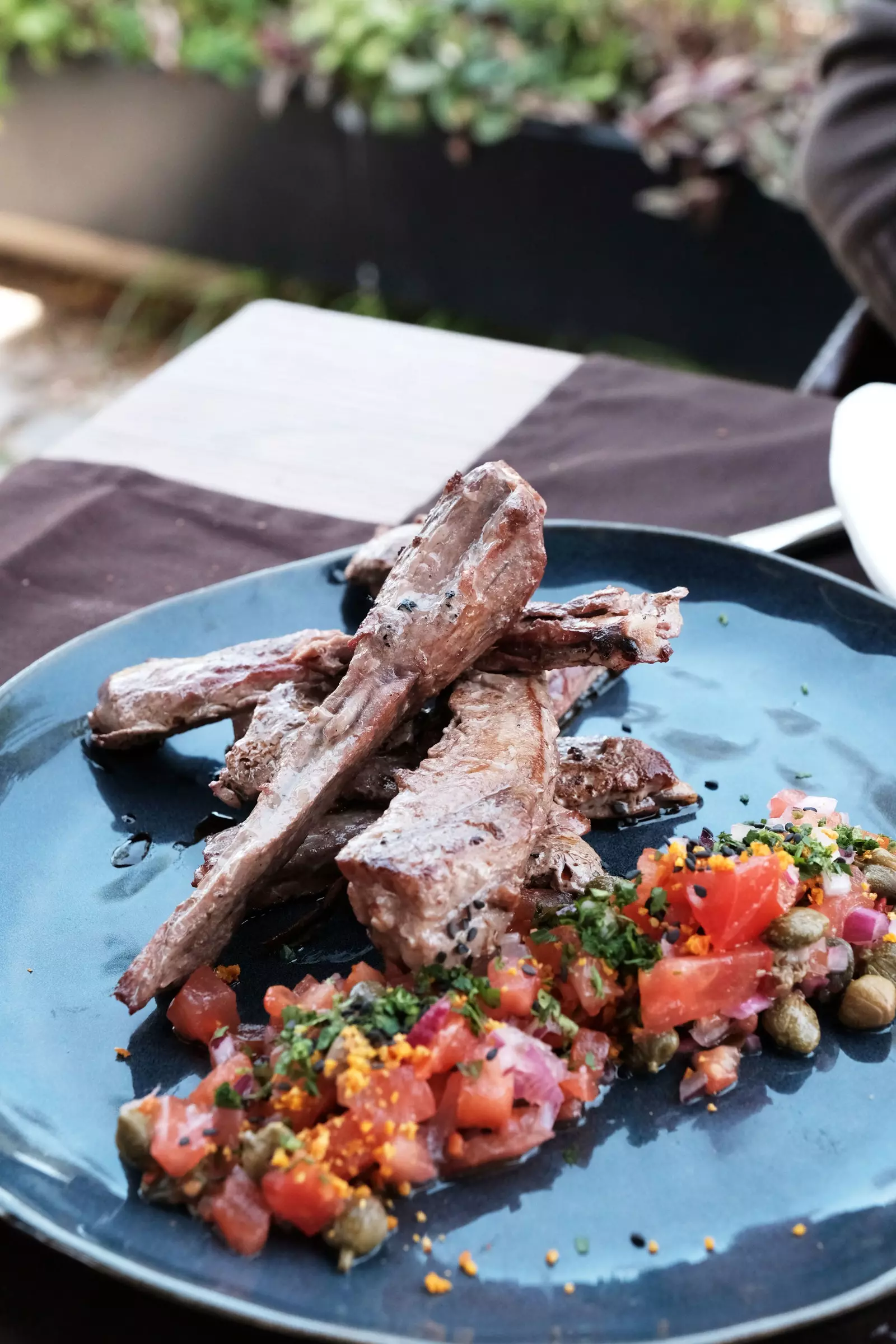
Tuna ribs at De la O restaurant
MUSEUMS, GARDENS AND PICNICS…WHO GIVES MORE?
Let us not forget that we are in the capital of the south, and that in these lands the ways of enjoying life are many and varied. And luckily, Much of the cultural offer is found around that river that is giving us so much joy.
We will have to cross the popular “bridge of the awnings” —officially, of the Cristo de la Expiración— in order, even without moving from the flank of Trinidad, to reach Cartuja Island. There, close to the river and at the foot of Torre Sevilla, is the Magellan Park.
In times of pandemic, one of the original proposals of the tower shopping center has been that its restaurant businesses offer, during weekends and holidays, a whole picnic kit to give a good account of in the park itself, outdoors and with —of course— views of the river.
A little further on stands the Navigation Pavilion, inheritance of that Universal Exhibition of 92 of which so many remnants still remain in the city. In the shape of an inverted boat and designed by the Sevillian Vázquez Consuegra —responsible, also, for the Magallanes Park—, it has a place exhibitions linked, above all, to the history of the sea and its relationship with Seville.
Also from 92 was the American Garden, which shone again after its reopening in 2019 after several improvement works. It has room for a whole open-air display of many of the plant species that came from America. Sitting in the shade in any corner or walking along its footbridge over the river is a real pleasure.
But, what if from the Torre del Oro we had gone in the opposite direction? Well, we would have fallen flat on our faces, at the height of the Paseo de las Delicias, with a sculpture of the Statue of Liberty in miniature which would have indicated to us that we are at the New York Pier: from it, built in 1905, the ships departed for the United States.
To commemorate that time and celebrate it, today it has been transformed into a recreation area where bars and terraces abound —such as the New York Pier—, gardens, pergolas and pontoons in which, regardless of the time of year, enjoy a good time with a cocktail ahead.
A curiosity? They say that there was a tunnel that connected the dock with the Palacio de San Telmo, current headquarters of the Presidency of the Junta de Andalucía and former residence of the Duke of Montpensier, so that he could directly access the ship that took him to his palace in Sanlúcar de Barrameda.
The truth is that we won't need to move from here: close to the Guadalquivir, whether upstream or downstream, we have plenty of plans. The hard part will be knowing which of them to start with.
